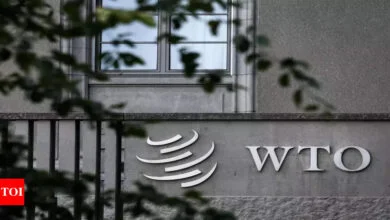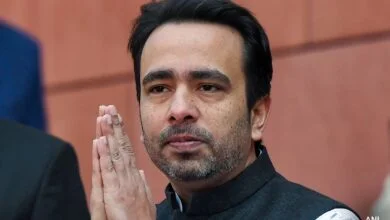In an interview with Mint, Andrade, shares his perspective on the firm’s upcoming new fund offer (NFO)—the Old Bridge Focused Equity Fund—and provides valuable insights into his investment approach and strategy. With 27 years of experience in Indian capital markets, including a decade as chief information officer (CIO) at IDFC Asset Management, he now serves as CIO at Old Bridge Asset Management Company.
Andrade, who recently established his own asset management company, says the firm concentrates on identifying businesses early into a cycle. Our stock selection process revolves around identifying large, debt-free companies that survive market downturns and use capital efficiently. The underlying companies in the portfolio would demonstrate leadership skills and have financial discipline.
Edited excerpts from the interview:
Could you highlight your move to alternative investment funds? Can you provide details on the AUM (assets under management) under your purview?
Old Bridge Capital was founded in 2015 and currently we are managing assets of about ₹8,000 crore. Over the last seven years, Old Bridge PMS has given an 18% annual return, compared with 15.6% by the BSE 500 TRI (total return index) since inception. In the last three years, Old Bridge PMS has outperformed by a wide margin. Our PMS has delivered 29.2% returns, against 20.4% given by BSE 500 TRI.
What sectors you are currently bullish on and what is the strategic rationale behind these choices?
Old Bridge Capital Management has a consistent focus on identifying opportunities in sectors undergoing cyclical troughs, with a specific emphasis on B2B businesses, manufacturing, and construction and infrastructure. Our approach involves anticipating sectors that are poised to lead the next market cycle.
We seek businesses at the early stages of a cycle, prioritising those consolidating, with low debt, higher efficiency, and favourable financial leverage and valuations.

View Full Image
With the recent surge in mid and small-cap stocks, what’s your perspective on the current landscape?
The market environment has been robust, offering opportunities across the market cycle. While acknowledging existing valuation challenges, we maintain a positive outlook, believing that every bull market lays the foundation for the next. Caution is exercised, especially in the small- and micro-cap space where potential overvaluation concerns arise. Despite short-term challenges, the overall trend favours India, which is displaying higher growth potential relative to peer countries. The market cap to GDP ratio signals potential overvaluation, prompting caution as the market may have priced itself ahead of the curve.
Considering the evolving scenario, what is your outlook on FII (foreign institutional investor) flows? Do you anticipate a significant resurgence?
FII interest in India remains strong despite some short-term challenges. The overall trend favours India over peer countries in the region. India’s robust corporate financials, supported by all-time low leverage, enable companies to invest in growth. The government’s capital expenditure and a stable macroeconomic environment further enhance the corporate growth story.
What are some current market trends? What do you see as significant themes, both globally and locally?
Well, manufacturing seems to be taking the spotlight globally. Many countries are eyeing India for capacity relocation. To support this trend, there’s a pressing need for enhanced infrastructure. Additionally, the energy sector is emerging as a key theme, and these trends might influence inflation trends globally.
How do you think the global economy’s dynamics impact India’s growth story?
We’re not isolated from the global economy, but a notable difference is that emerging markets like India are reducing debt while developed markets are increasing theirs. This reduction in debt is beneficial. Moreover, inflation rates and the cost of capital between the West and developing economies are merging, resulting in lower interest rates in India, which benefits corporates and consumption sectors.
Moving on to investment trends, what do you believe are the upcoming opportunities for investors?
The most prominent trend I see is India’s demographics. Being the largest country with a steadily growing per capita income, India is on every investor’s radar. It’s a compelling destination for investment.
How has your investment style changed over these years?
My investment style has not changed much but it has evolved but remains rooted in buying large, efficient businesses at attractive prices. Capital efficiency is key, and our philosophy is always value-focused.
How do you go about selecting stocks? What’s the criteria?
Our stock selection process revolves around identifying large, debt-free companies that survive market downturns and use capital efficiently. We’re interested as long as they meet these criteria and are reasonably priced. We focus on companies that show potential to be dominant in their industry. We like to be early in that transition. We concentrate on identifying businesses early into a cycle.
The underlying companies in the portfolio would demonstrate leadership skills and have financial discipline. The endeavour would be to look for companies in industries that are consolidating.
Learning from experiences is crucial in investing. What are some valuable lessons that you’ve learnt over the years?
There are a lot. A recent lesson is to avoid searching for value in elevated markets. Also, understanding that no company operates in isolation; if industry profitability grows, so does the company’s profitability.
Any advice for those starting their investment journey?
New investors will make mistakes, and that’s okay. Learn from them, correct promptly, and start with a diversified portfolio. Adjustments can come later based on risk appetite and goals.
With this fund, we’re focusing on specific market segments, maintaining a diversified portfolio of 25-30 businesses while concentrating in certain categories or sectors. More importantly, our focus will also be on the segment where we do not want to focus which is a significant part of the market.
Our strategy revolves around a buy-and-hold. We intend to invest in mid-markets and maintain a healthy margin of safety in all that we do. The underlying companies in the portfolio would meet the criteria of capital efficiency, low leverage and low valuation.
We prioritize businesses that consolidate, gain market share efficiently, and lead in cost-effectiveness. Leaders post-consolidation often enjoy increased market share and pricing power. We favour companies improving from a low RoE (return on equity), emphasizing capital employed for positive cash flow, and prefer those with low gearing.
How do you see the mutual fund industry’s growth?
As long as people in India save, the mutual fund industry remains relevant. We’re essentially in the savings business, and as long as people continue to save, we’ll have our place in the financial landscape.









